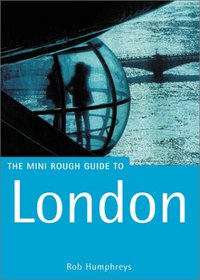Search -
The Rough Guide to London Mini (Rough Guide Mini Guides)
The Rough Guide to London Mini - Rough Guide Mini Guides
Author:
INTRODUCTION What strikes visitors more than anything about London is the sheer size of the place. With a population of just under eight million, it's Europe's largest city by far, spreading across an area of more than 620 square miles from its core on the River Thames. Londoners tend to cope with this by compartmentalizing the city, identifyin... more »
Author:
INTRODUCTION What strikes visitors more than anything about London is the sheer size of the place. With a population of just under eight million, it's Europe's largest city by far, spreading across an area of more than 620 square miles from its core on the River Thames. Londoners tend to cope with this by compartmentalizing the city, identifyin... more »
ISBN-13: 9781858287751
ISBN-10: 1858287758
Publication Date: 11/1/2000
Pages: 368
Edition: 2nd
Rating: ?
ISBN-10: 1858287758
Publication Date: 11/1/2000
Pages: 368
Edition: 2nd
Rating: ?
0 stars, based on 0 rating
Genres:
- Travel >> Europe >> Great Britain >> England >> General
- Travel >> Europe >> Great Britain >> England >> London
- Travel >> Europe >> Great Britain >> General
- Travel >> Reference >> Guidebooks
- Travel >> Travel Writing
- Travel >> Guidebook Series >> Rough Guide





